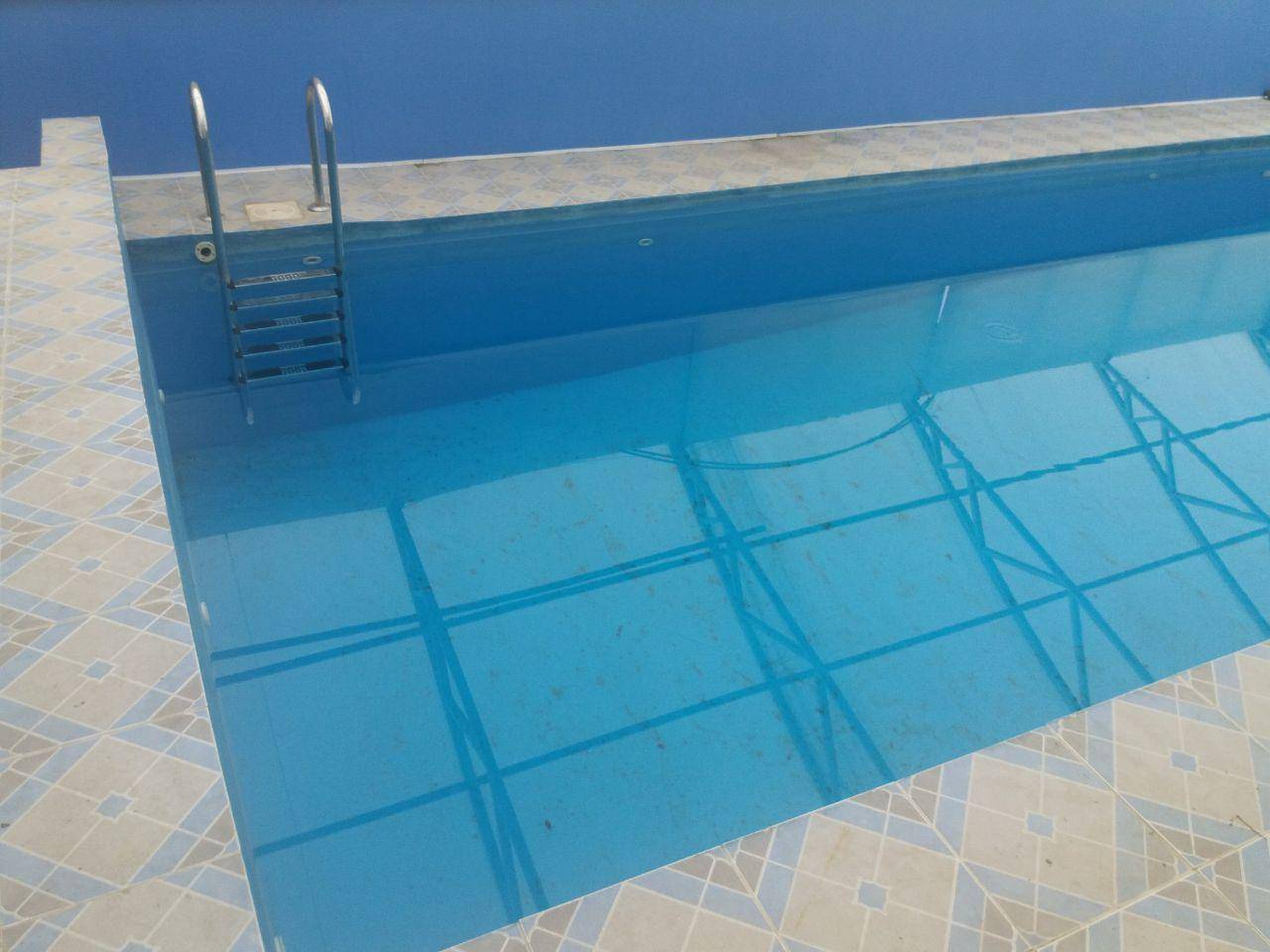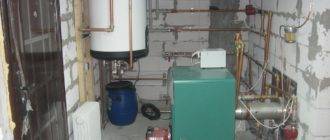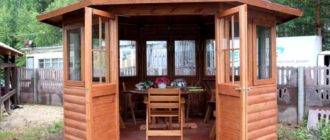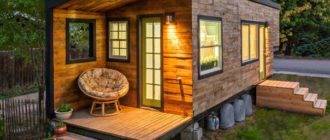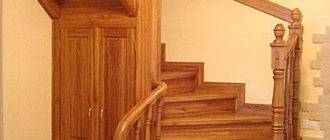Pool installation is quite expensive. If you are looking for something simpler and more economical, we are ready to offer you 9 options for how to become the owner of an excellent pool and not be left with an empty wallet.
Pallet pool
In the presence of a conventional prefabricated pool, we suggest installing it on the site, having previously leveled the site with sand. Next, make a high wooden frame around it, on which pallets are laid out flush with the edges of the pool. You will have a wooden deck on which to sunbathe or sit with your feet dangling in the water.

Swimming pool
When one creative architect Stephan Bees of New Orleans saw an abandoned dumpster, he didn't cringe in the stench. Instead, he saw an opportunity to use the find and brought the container home, where he thoroughly washed and disinfected it, and then set it up in the garden and lined it with a wooden frame. Now the industrial waste container is a great pool that this family enjoys all summer long.
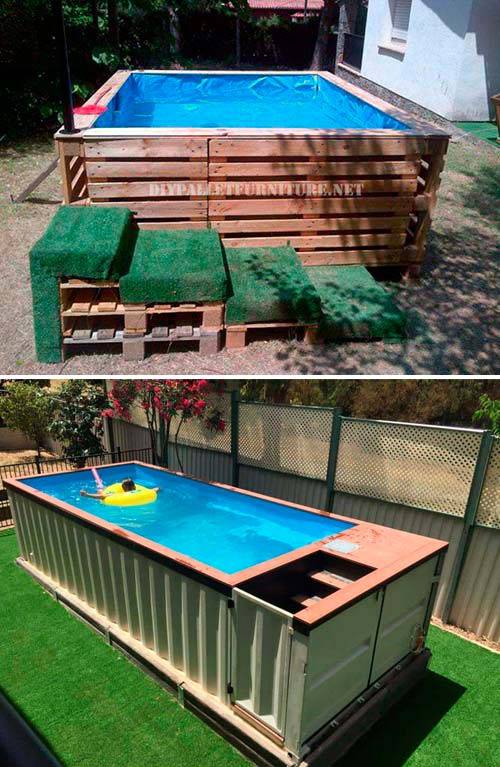
Deep wooden pool
Use wooden pallets to create the pool walls, placing them in one row at the base, and in two rows around the perimeter, cut them to size, retaining the original shape of the pallets and fasten them together very well, as water can easily disrupt the insecure fastening. Then cover the entire inner surface with a large, high-strength, one-piece plastic cover to avoid leakage. Make a ladder nearby, it can be laid out with a special covering "under the grass" or rubberized tiles.
Shipping container
If you can get your hands on a shipping container, you can build one of the coolest pools out there that doesn't cost much, but lasts for a long time. It is installed on a flat surface, secured with a strong frame, a hole is made to exit the pumping station, and all welds are sealed. The only problem you can run into is that the shipping container can rust, but the rust can be cleaned and painted.
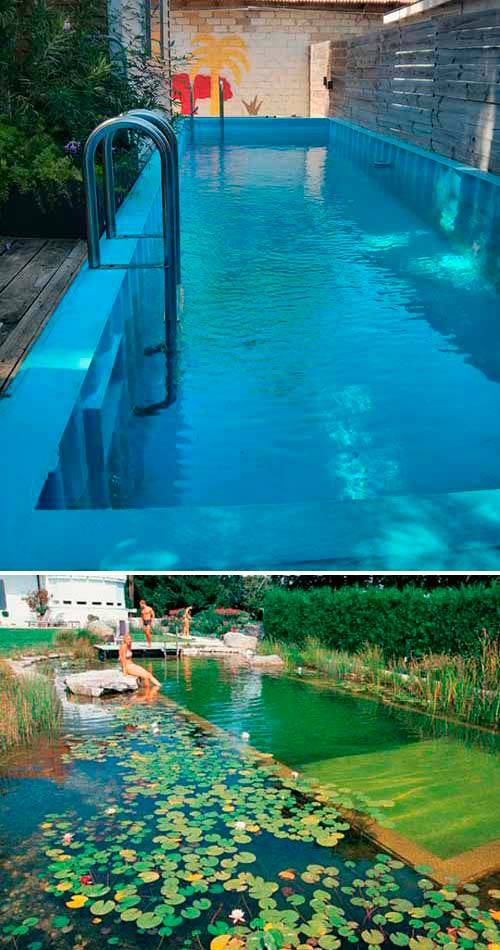
Natural pool
Some garden plots have small ponds on the territory. In this case, you will not need structures made of metal and concrete, because you can make a natural pond for swimming. By using gravel and clay at the bottom and natural aquatic plants instead of harsh chemicals, you get not only a functional, but also an environmentally friendly pool.
If the land is generous with groundwater, then you can dig a foundation pit for the future bath, but this work requires material costs.
Galvanized tank
If you want your pool not to contain a single gram of chlorine, then opt for a galvanized tank. It is small in size, you can dig it into the ground without any problems. In such a tank it will be pleasant to cool off on a hot summer day for both adults and children.
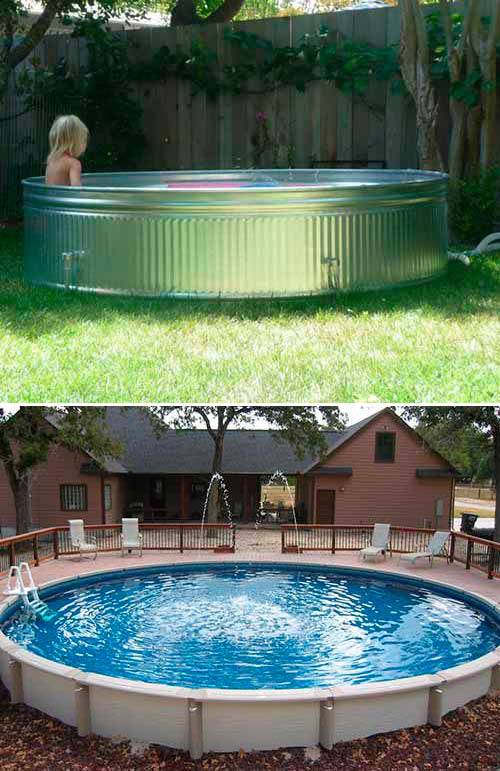
Wooden pool
If you have a significant amount of wooden planks left after building a house, then we suggest making a frame wooden pool. To install it, you need to prepare a sand pillow. A solid frame is made from the boards, on both sides it is covered with a wooden covering, and from the inside it is lined with a dense high-strength plastic film, which is carefully attached to the frame. Such pools should not be made bulky so that they do not deform under the weight of the water.
Concrete pool
Inviting specialists for the manufacture of a concrete pool will cost a tidy sum.But, if there are handy and physically strong men in the family, it will not be difficult for them to dig out and arrange a concrete pool on their own. First, the area of the future bath is determined, the foundation is prepared, the floor is screed and the area is waterproofed. You will need cement, reinforcement, waterproofing mixes, crushed stone and sand. It is better to make the pool walls curved, since rectilinear structures are more susceptible to destruction.
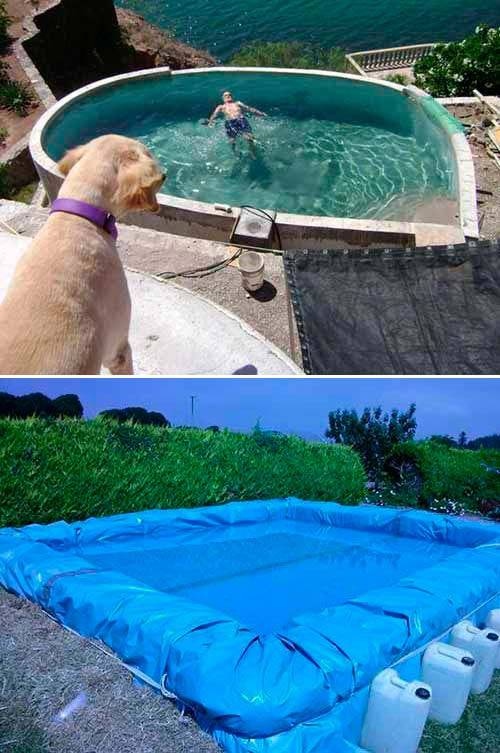
Straw pool
Using bales of hay and some plastic, rope and water, you can create the perfect pool for cooling in the heat. Straw bales are installed along the pre-measured perimeter, forming the basis of the future container. Some of them are laid out on the ground inside the created "reservoir". A large piece of film is taken, which covers the entire inner surface, and the edges of it completely cover the bales so that they can be tied to them. The resulting structure is propped up with canisters of water to maintain its shape. The water in such a pool will be heated naturally from the sun, and the straw will prevent it from losing heat or cooling from the ground.

